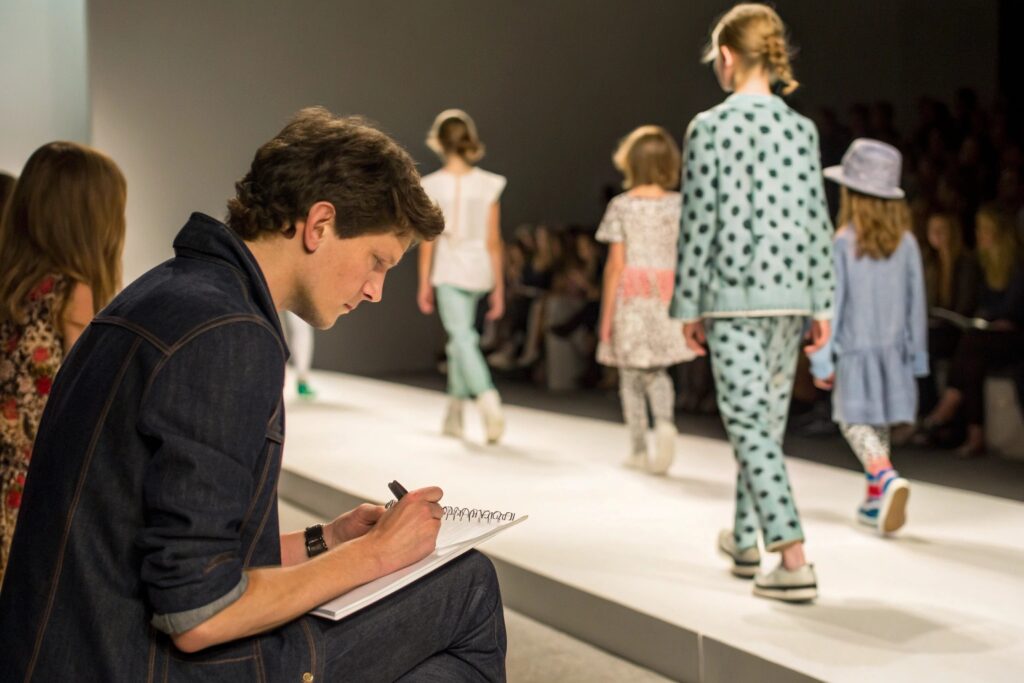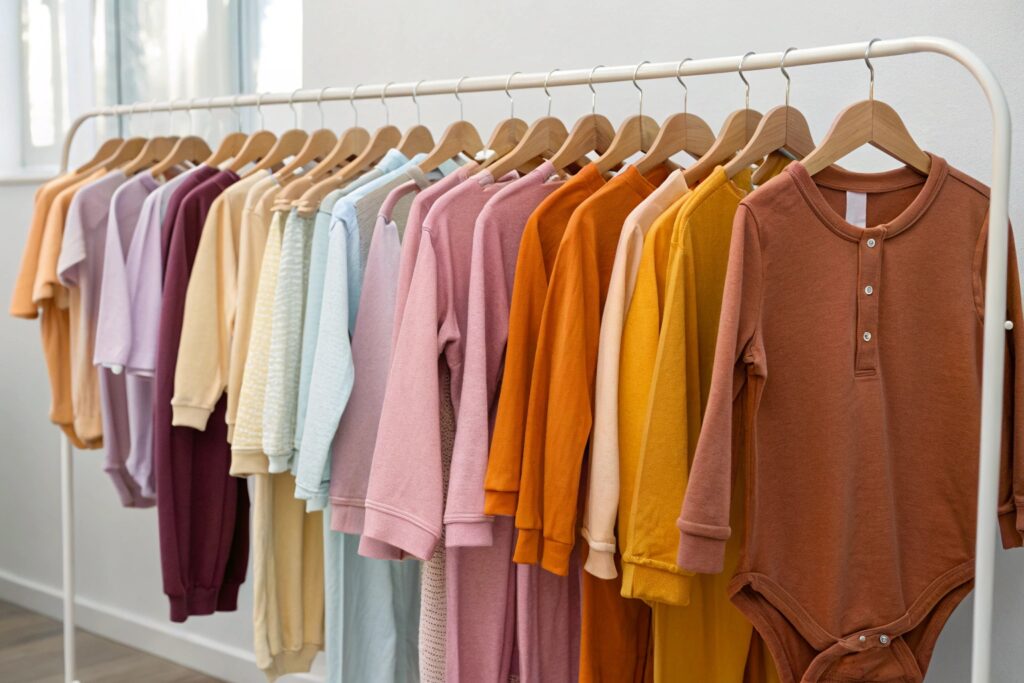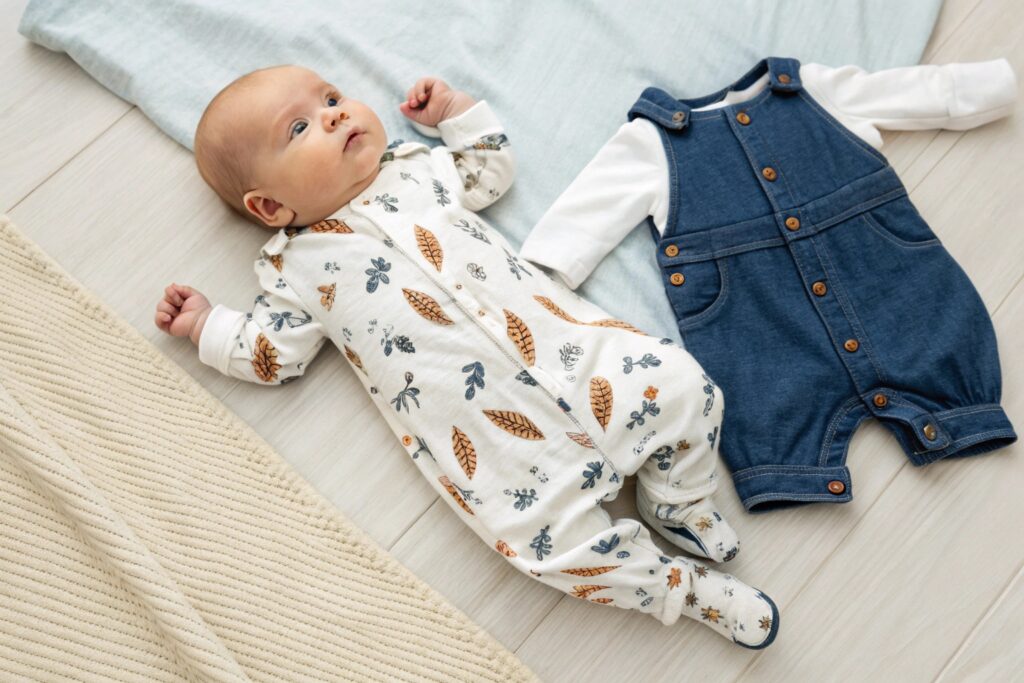Children’s fashion is more stylish and dynamic than ever. From runway-inspired looks to seasonal color palettes, kidswear brands are now as trend-focused as adult fashion labels.
Kidswear brands stay on trend by following fashion forecasting services, analyzing seasonal styles, monitoring global influencers, and balancing fast-moving fads with long-term staples.
In this article, we’ll explore how brands find inspiration, respond to trends, and maintain the perfect mix of creativity and practicality in children's fashion.
Where Kidswear Brands Find Trend Inspiration?
Children’s fashion may seem simple, but it draws heavily from high fashion, pop culture, and even tech trends. So where do designers get their ideas?
Kidswear brands find trend inspiration through runway shows, trend reports, children’s influencers, international trade shows, and lifestyle shifts among millennial and Gen Z parents.

Main sources of trend inspiration:
| Source | How It Influences Kidswear |
|---|---|
| Fashion Weeks (NY, Paris, Milan) | Shapes color and silhouette trends |
| WGSN, Trendstop, Pantone | Forecasts fabrics, prints, palettes |
| Pop Culture (TV, movies, games) | Drives licensed character demand |
| Social Media (Instagram, TikTok) | Highlights what stylish parents love |
| Global Streetwear | Inspires mini-me collections |
Emerging inspiration channels:
- Parenting influencers on Instagram
- Lifestyle brands like Zara Home Kids, H&M Conscious
- Sustainability movements influencing earthy tones and organic fabrics
Brands often adapt adult trends into play-friendly, age-appropriate versions that reflect the same visual language.
How Seasonal Trends Impact Children's Fashion?
Seasons change more than just the weather—they affect how kidswear looks, feels, and sells.
Seasonal trends affect kidswear by introducing fresh color palettes, updated fabrics, and new silhouettes that match holiday calendars, school seasons, and global fashion shifts.

How brands plan around seasons:
| Season | Typical Focus |
|---|---|
| Spring/Summer | Bright colors, breathable fabrics, prints |
| Fall/Winter | Layering, rich tones, warm textures |
| Back to School | Uniform-inspired styles, basics bundles |
| Holiday | Sparkle, velvet, special occasionwear |
Seasonal timing matters:
- Samples are developed 6–12 months in advance
- Production windows follow seasonal calendars (SS/FW)
- Retail markdowns follow seasonal stock rotations
At Fumao, we help clients align their production calendars with seasonal color cards and market trends, ensuring on-time launches.
Role of Fashion Forecasting in Kids' Clothing Design?
Fashion forecasting isn’t just for adult labels—it plays a huge role in guiding kidswear collections.
Fashion forecasting gives kidswear brands early insights into future trends, helping them design clothing that aligns with colors, prints, themes, and materials expected to be popular in the coming year.

Leading forecasting tools for kidswear:
| Service | What It Offers |
|---|---|
| WGSN | Trend analysis, color palettes, silhouettes |
| Pantone | Seasonal color of the year guides |
| Trendstop | Child-specific reports and moodboards |
| Pinterest Trends | Search-based predictions from parents |
How brands use forecasts:
- Design teams create mood boards based on forecasts
- Factories source fabrics in forecasted colors
- Marketing teams prepare trend-driven campaigns
Forecasting helps reduce guesswork and ensures a more data-driven design process, even for smaller brands.
Fast Fashion vs. Timeless Styles in Kidswear?
With trends moving fast, how do kidswear brands balance staying current and staying relevant?
Kidswear brands balance fast fashion and timeless styles by mixing trendy prints or silhouettes with classic core items like leggings, bodysuits, and jackets that never go out of style.

Comparison of fast fashion vs. timeless pieces:
| Category | Fast Fashion Kidswear | Timeless Kidswear |
|---|---|---|
| Trend Cycle | 4–6 weeks | 6 months – 2 years |
| Design Focus | Bright prints, slogans | Solid colors, simple shapes |
| Fabric Use | Polyester blends, novelty | Cotton, linen, organic fibers |
| Retail Channels | Mass market, flash sale | Boutique, premium online shops |
Why both matter:
- Trendy items create excitement and drive seasonal traffic
- Timeless staples support brand longevity and resale value
- Sustainable brands lean toward timeless + slow trend approach
At Fumao, we work with both fast fashion clients needing quick-turn prints, and timeless brands focused on soft neutrals and organic babywear.
Conclusion
Kidswear brands stay on trend by studying fashion forecasts, adapting seasonal styles, and blending creative design with practical fabrics. Whether chasing bold prints or sticking to timeless neutrals, the best brands know how to translate global inspiration into wearable, lovable clothes for real kids.










